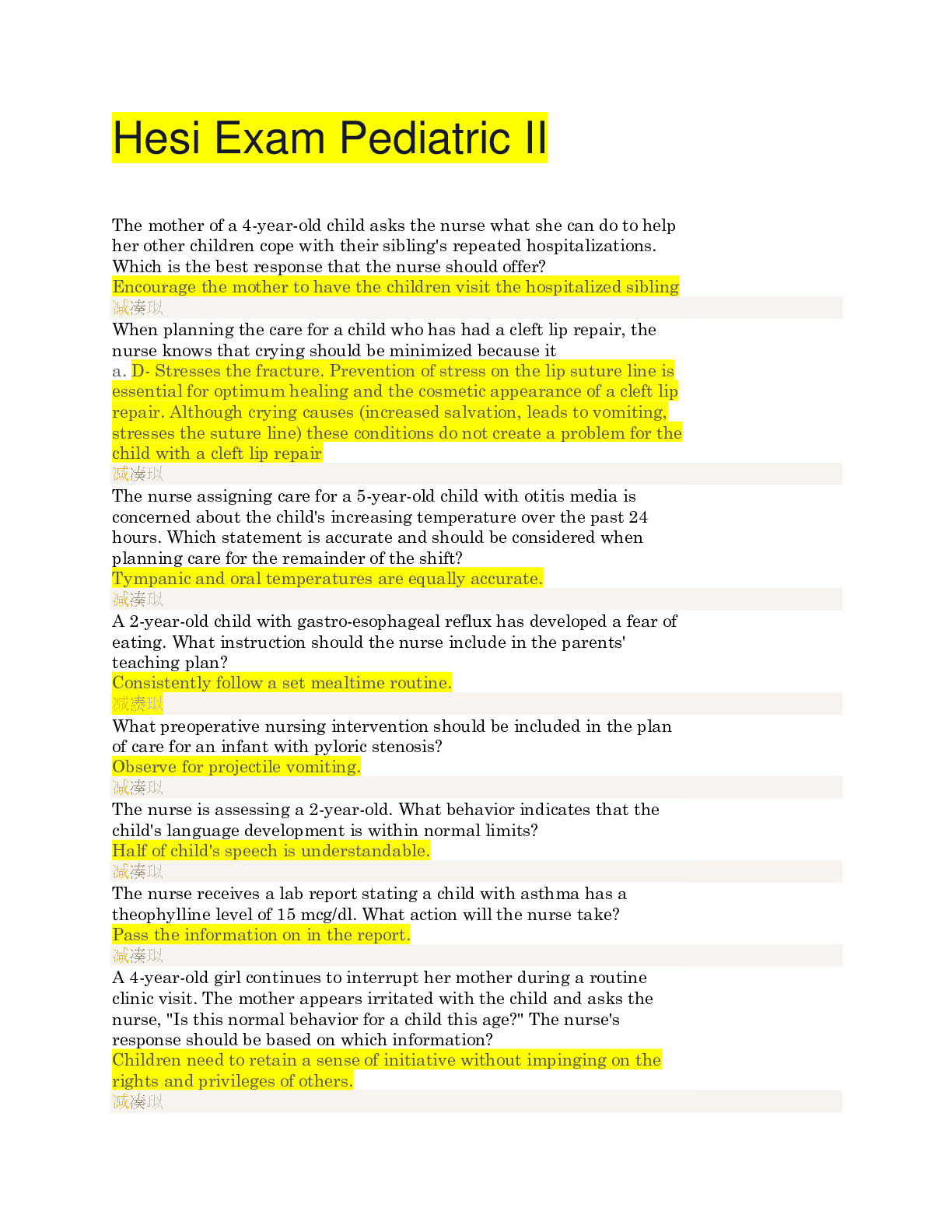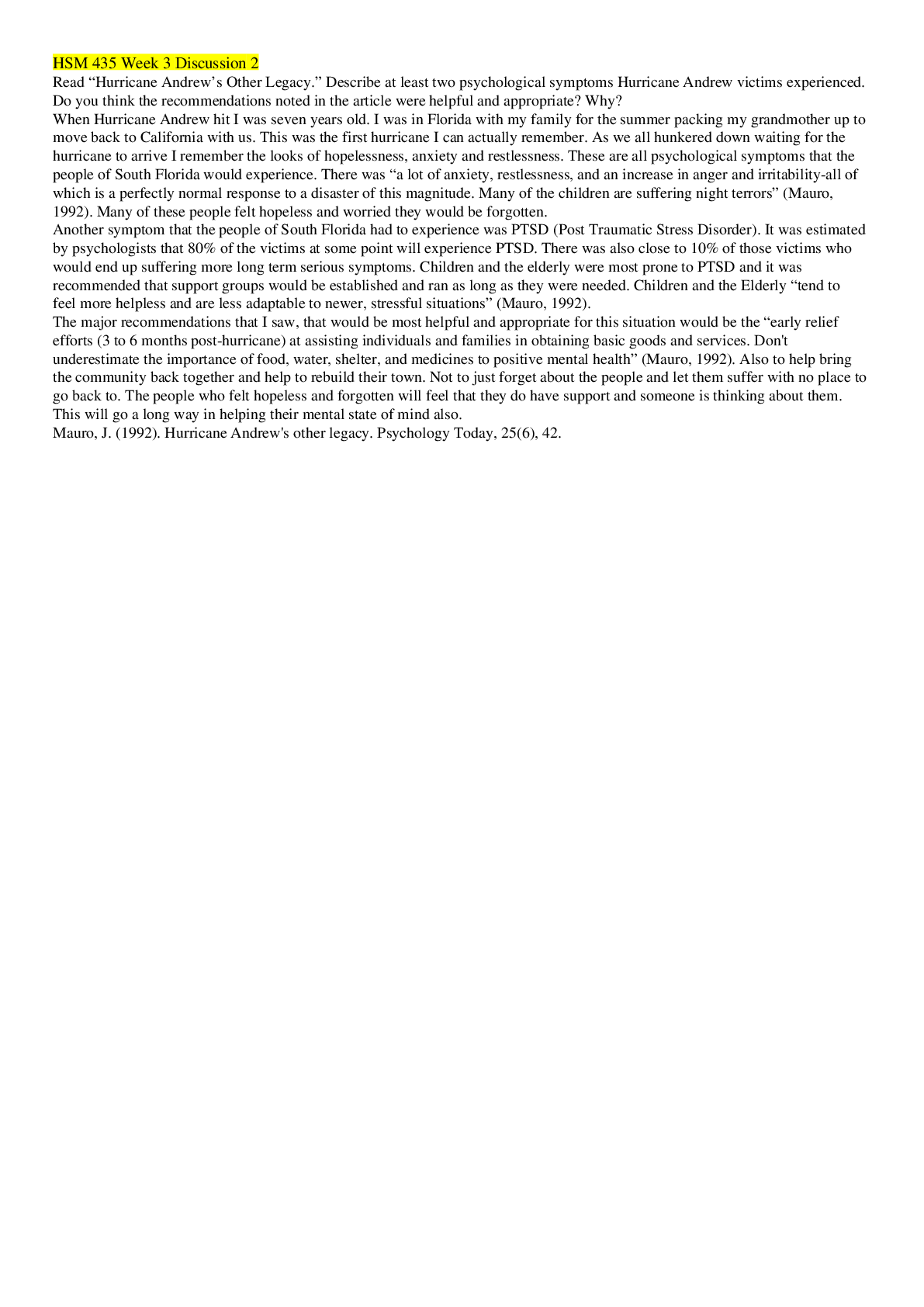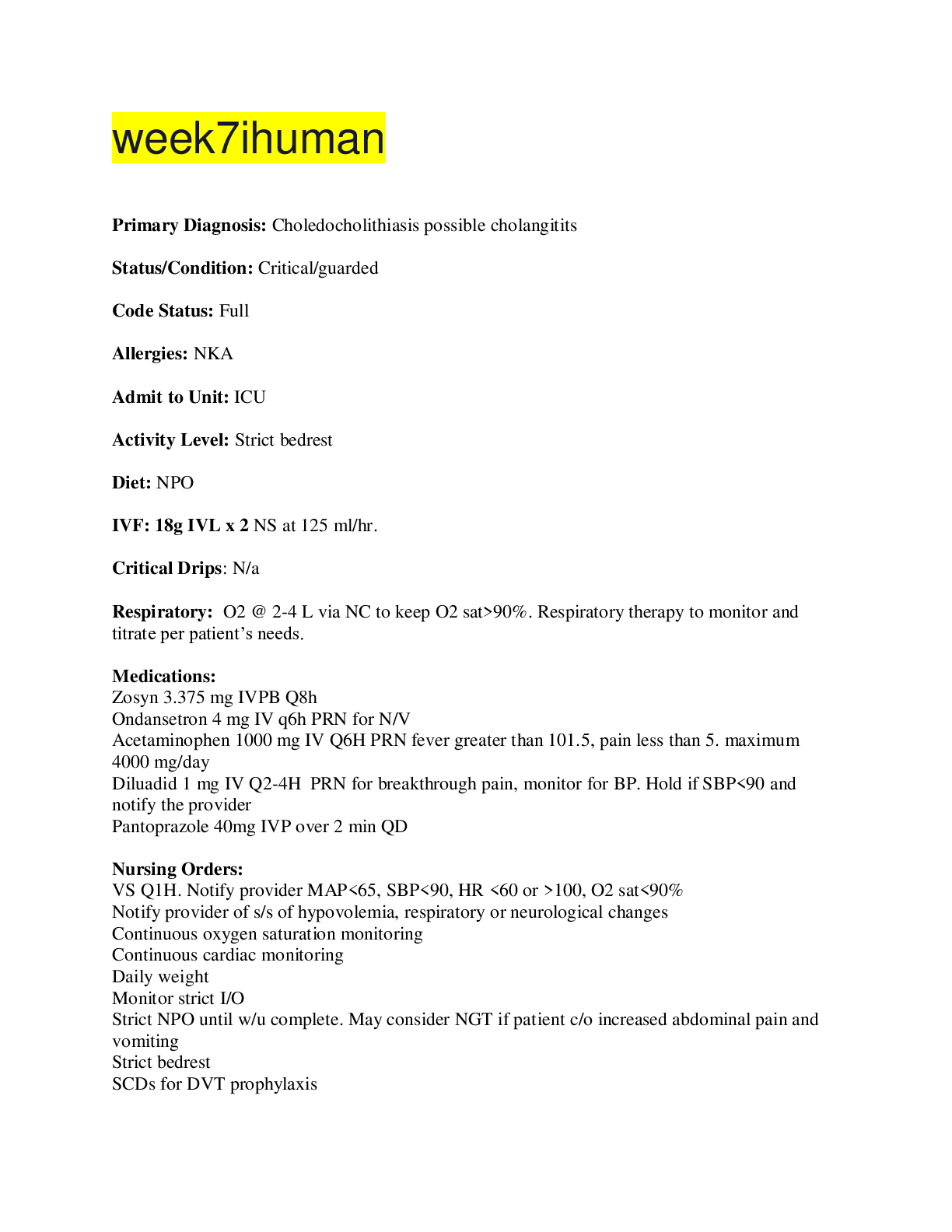*NURSING > STUDY GUIDE > Walden University - NURS 6560 week8ihuman_100% Correct. (All)
Walden University - NURS 6560 week8ihuman_100% Correct.
Document Content and Description Below
week8ihuman Primary Diagnosis: Small bowel obstruction (SBO) Status/Condition: stable Code Status: Full Allergies: NKA Admit to Unit: Surgical unit Activity Level: bed rest with... bathroom privileges Diet: NPO IVF: 18g IVL x 2 NS at 125 ml/hr. Critical Drips: N/a Respiratory: O2 @ 2-4 L via NC PRN to keep O2 sat>90%. Respiratory therapy to monitor and titrate per patient’s needs. Medications: Hold all PO medications until seen by surgery Zosyn 3.375 mg IVPB Q8h Ondansetron 4 mg IV q6h PRN for N/V Acetaminophen 1000 mg IV Q6H PRN fever greater than 101.5, pain less than 5. maximum 4000 mg/day Diluadid 1 mg IV Q2-4H PRN for breakthrough pain, monitor for BP. Hold if SBP<90 and notify the provider Pantoprazole 40mg IVP over 2 min QD Nursing Orders: VS Q4H. Notify provider SBP<90, HR <60 or >100, O2 sat<90% Notify provider of s/s of hypovolemia, respiratory or neurological changes Daily weight Monitor strict I/O Strict NPO. NGT to intermittent low wall suction SCDs for DVT prophylaxis Follow Up Lab tests: lipase, type and screen for PRBCs, CBC and CMP daily, PT/PTT/INR now. Blood cultures x 2 sets prior to initiating the antibiotics Diagnostic testing: Abdominal xray-SBO CT scan abd/pelvis-r/o cause of obstruction Consults: General surgery stat- SBO Nutrition-fiber diet recommendations, prevention of constipation Patient Education and Health Promotion Pathophysiology of SBO risk factors of the disease Symptoms of SBO Prevention of progression of SBO High fiber diet Discharge planning and required follow-up care Discharge patient home on PO medications when stable F/U with PCP within 24-48 hours. F/U with surgeon per his order Take medications as ordered. Do not stop or skip the medications even if you feel better without consulting the PCP. Call your healthcare provider right away if you have any of the following: Tiredness that persists for 2 to 3 days, decreased exercise tolerance, chest pain or pressure feeling, persistent SOB at rest or with mild activities, fever over 100.4°F (38.0°C), sweats, increase and pounding heart rate, difficulty catching breath, persistent cough, blood in the sputum feeling of impending doom. Discharge patient home when symptoms have resolved and patient is hemodynamically stable. F/U with general surgery after discharge References Doherty, G. M. (2015). Current diagnosis & treatment: Surgery (14th ed.). New York: McGraw Hill Education. Papadakis, M. A., McPhee, S. & Rabow, M.W. (2019). Current medical diagnosis & treatment 2019 (58th ed.). New York: McGraw Hill Education. Sabatine, M. S. (2017). Pocket Medicine. The Massachusetts General Hospital Handbook of Internal Medicine (6th ed.). Philadelphia: Wolters Kluwer. [Show More]
Last updated: 2 years ago
Preview 1 out of 3 pages

Buy this document to get the full access instantly
Instant Download Access after purchase
Buy NowInstant download
We Accept:

Reviews( 0 )
$13.00
Can't find what you want? Try our AI powered Search
Document information
Connected school, study & course
About the document
Uploaded On
Aug 03, 2020
Number of pages
3
Written in
Additional information
This document has been written for:
Uploaded
Aug 03, 2020
Downloads
0
Views
67





















